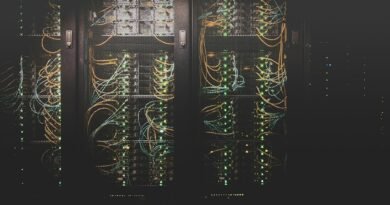Top 10 Technology Trends to Follow in 2025
As we look ahead to 2025, the technology landscape is evolving at an unprecedented pace, driven by groundbreaking innovations that are set to redefine industries and enhance our everyday lives. These top 10 technology trends of 2025 include advancements across artificial intelligence, quantum computing, immersive experiences, and sustainable tech solutions, each promising to address emerging challenges while unlocking new opportunities for growth and efficiency. From reshaping healthcare to revolutionizing transportation, these trends are not only transforming sectors but are also laying the foundation for a more connected, secure, and sustainable future. Here are the top 10 technology trends to watch closely as they lead the way into a new digital era.
1. Agentic AI
First and foremost, Agentic AI refers to systems that can operate independently and make decisions on behalf of users. This trend signifies a shift towards more autonomous AI applications, which will enhance efficiency and decision-making across various sectors, from finance to healthcare.
2. AI Governance Platforms
Moreover, with the rise of AI comes the need for governance frameworks to ensure ethical use and compliance. AI governance platforms will help organizations manage risks associated with AI deployment, focusing on transparency, accountability, and regulatory compliance.
3. Disinformation Security
In addition, as misinformation becomes more prevalent, technologies aimed at combating disinformation will be crucial. This includes tools for verifying sources, tracking the spread of false information, and educating users about media literacy.
4. Post-Quantum Cryptography
Furthermore, with the advent of quantum computing, traditional encryption methods are at risk. Therefore, post-quantum cryptography aims to develop new algorithms that can withstand quantum attacks, ensuring data security in a future where quantum computers are commonplace.
5. Ambient Invisible Intelligence
Additionally, ambient intelligence involves creating smart environments that respond to user needs without direct interaction. This trend leverages IoT and AI to create seamless experiences in homes and workplaces, making technology nearly invisible while enhancing daily life.
6. Energy-Efficient Computing
As environmental concerns grow, energy-efficient computing technologies will become essential. Innovations in hardware and software that reduce energy consumption will not only lower costs but also support sustainability initiatives across industries.
7. Hybrid Computing
Another key trend is hybrid computing, which combines cloud and edge computing to optimize performance and resource use. This approach allows organizations to process data closer to its source while leveraging cloud capabilities for scalability and storage.
8. Spatial Computing
Moreover, spatial computing integrates digital information with the physical world through technologies like augmented reality (AR) and virtual reality (VR). This trend is set to revolutionize fields such as gaming, education, and remote work by creating immersive experiences.
9. Polyfunctional Robots
In addition to these advancements, robots are becoming increasingly versatile, capable of performing multiple functions across different environments. Advances in robotics will lead to more capable machines that can assist in various tasks, from manufacturing to healthcare.
10. Neurological Enhancement
Finally, technologies aimed at enhancing cognitive functions are emerging. Neurological enhancement includes brain-computer interfaces that could improve mental capabilities or assist individuals with disabilities, paving the way for significant advancements in healthcare and personal productivity.




